Study on Wind-Proof Effect and Stability of Windbreak Fence in Alpine Skiing Center
Abstract
:1. Introduction
2. Methodology
2.1. The Research Object
2.2. Meteorological Conditions near the Piste
2.3. The Numerical Model
2.4. The Boundary Conditions
2.5. Hydrostatic Calculations
3. Results and Discussion
3.1. Distribution Characteristics of the Wind Field in Storm Bars
3.2. Influence of the Height of the Storm Fence on the Effect of the Storm
3.3. Distribution Characteristics of Wind Pressure in Windbreak Grid
3.4. Distribution of Equivalent Stress and Displacement of Windbreak Grid
4. Conclusions
- (1)
- It can be seen that when the wind speed at the entrance height of 10 m is 10 and 33 m/s, the maximum wind speed near the opening of the windbreak fence is as high as 15 and 50 m/s, respectively. The wind speed in most of the watershed after the fence is below 5 and 15 m/s, respectively, which is obviously lower than the incoming wind speed, and the wind protection effect is obvious;
- (2)
- The wind protection effect of the wind fence varies with different heights, and the wind protection effect of the 7.9 m high wind fence is better than the 3.7 m and 4.7 m high wind fences;
- (3)
- The wind pressure at the top of the fence is the highest, and the maximum wind pressure at the inlet height of 10 m is 80 and 850 Pa when the wind speed is 10 and 33 m/s, respectively;
- (4)
- The greater the incoming wind speed, the greater the equivalent force and displacement on the windbreak, and the higher the windbreak, the greater the equivalent force and displacement on the windbreak. Under the action of maximum wind speed, the stability of 7.9 m high windbreak is relatively low.
Author Contributions
Funding
Institutional Review Board Statement
Informed Consent Statement
Data Availability Statement
Conflicts of Interest
References
- Liu, Y.M.; Gui, L. Beijing 2022 Olympic and Paralympic Winter Games venue planning and layout. Beijing Plan. Rev. 2021, 197, 160–168. [Google Scholar]
- Liang, X.; Lu, J.Q.; Tan, Z.Y.; Li, H.; Gao, W.; Li, X.G. Leaning along mountains, painting Haituo swallows—On the design of National Alpine Skiing Center. Archit. J. 2021, 633, 83–91. [Google Scholar]
- Gillies, J.A.; Etyemezian, V.; Nikolich, G.; Glick, R.; Rowland, P.; Pesce, T.; Skinner, M. Effectiveness of an array of porous fences to reduce sand flux: Oceano Dunes, Oceano CA. J. Wind Eng. Ind. Aerodyn. 2017, 168, 247–259. [Google Scholar] [CrossRef]
- Park, C.W.; Lee, S.J. Experimental study on surface pressure and flow structure around a triangular prism located behind a porous fence. J. Wind Eng. Ind. Aerodyn. 2003, 91, 165–184. [Google Scholar] [CrossRef]
- Cong, X.C.; Cao, S.Q.; Chen, Z.L.; Peng, S.T.; Yang, S.L. Impact of the installation scenario of porous fences on wind-blown particle emission in open coal yards. Atmos. Environ. 2011, 45, 5247–5253. [Google Scholar] [CrossRef]
- Alhajraf, S. Computational fluid dynamic modeling of drifting particles at porous fences. Environ. Model. Softw. 2004, 19, 163–170. [Google Scholar] [CrossRef]
- Packwood, A.R. Flow through porous fences in thick boundary. J. Wind Eng. Ind. Aerodyn. 2000, 88, 75–90. [Google Scholar] [CrossRef]
- Nieto, P.G.; del Coz Díaz, J.J.; Castro-Fresno, D.; Muñoz, F.B. Numerical simulation of the performance of a snow fence with airfoil snow plates by FVM. J. Comput. Appl. Math. 2010, 234, 1200–1210. [Google Scholar] [CrossRef]
- Jiang, X.T.; Yin, Z.X.; Cui, H.B. Wind Tunnel Tests of Wind-Induced Snow Distribution for Cubes with Holes. Adv. Civ. Eng. 2019. [Google Scholar] [CrossRef]
- Bai, L.; Shen, A.Q.; Wei, Z.X. Comparison of in-situ observation effect of highway windbreak structures and simulation of installation optimization. J. Highw. Transp. Res. Dev. 2016, 33, 39–53. [Google Scholar]
- Xue, W.X. Research on the effect of the new windbreak engineering in the strong cross-wind section of the Baili wind area in Xinjiang. Highway 2014, 59, 202–206. [Google Scholar]
- Zhang, K.; Zhao, P.; Zhao, J.; Zhang, X. Protective effect of multi-row HDPE board sand fences: A wind tunnel study. Int. Soil Water Conserv. Res. 2021, 9, 103–115. [Google Scholar] [CrossRef]
- Alonso-Estébanez, A.; Díaz, J.D.C.; Rabanal, F.Á.; Pascual-Muñoz, P. Performance analysis of wind fence models when used for truck protection under crosswind through numerical modeling. J. Wind Eng. Ind. Aerodyn. 2017, 168, 20–31. [Google Scholar] [CrossRef]
- Mohebbi, M.; Rezvani, M.A. Analysis of the effects of lateral wind on a high-speed train on a double routed railway track with porous shelters. J. Wind Eng. Ind. Aerodyn. 2019, 184, 116–127. [Google Scholar] [CrossRef]
- Telenta, M.; Duhovnik, J.; Kosel, F.; Šajn, V. Numerical and experimental study of the flow through a geometrically accurate porous wind barrier model. J. Wind Eng. Ind. Aerodyn. 2014, 124, 99–108. [Google Scholar] [CrossRef]
- Dong, G.N.; Chen, T.G.; Ren, C.J.; Wang, K. Wind tunnel investigation of wind reduction effect under porous fences protection. J. Wind Eng. Ind. Aerodyn. 2023, 232, 105250. [Google Scholar] [CrossRef]
- Wu, X.; Guo, Z.; Wang, R.; Fan, P.; Xiang, H.; Zou, X.; Yin, J.; Fang, H. Optimal design for wind fence based on 3D numerical simulation. Agric. For. Meteorol. 2022, 323, 109072. [Google Scholar] [CrossRef]
- Li, K.; Liang, X.F.; Yang, M.Z. Anti-wind aerodynamic performance of high-speed train and wind-break wall optimization. J. Cent. South Univ. Sci. Technol. 2018, 49, 1297–1305. [Google Scholar]
- Zhang, J.; Zhang, M.; Huang, B.; Li, Y.; Yu, J.; Jiang, F. Wind Tunnel Test on Local Wind Field around the Bridge Tower of a Truss Girder. Adv. Civ. Eng. 2021, 2021, 1–13. [Google Scholar] [CrossRef]
- Dong, Z.; Luo, W.; Qian, G.; Wang, H. A wind tunnel simulation of the mean velocity fields behind upright porous fences. Agric. For. Meteorol. 2007, 146, 82–93. [Google Scholar] [CrossRef]
- Li, B.; Yang, Q.S.; Feng, S.H. Windbreak performance of wind fence on high speed train based on numerical simulation. Eng. Mech. 2015, 32, 249–256. [Google Scholar]
- Chen, T.G.; Ma, S.M. Three-dimensional numerical simulation of flow field behind porous fence with different section. Comput. Simul. 2014, 31, 258–263. [Google Scholar]
- Chen, G.; Wang, W.; Sun, C.; Li, J. 3D numerical simulation of wind flow behind a new porous fence. Powder Technol. 2012, 230, 118–126. [Google Scholar] [CrossRef]
- Chen, G.H.; Duan, J.H.; Li, J.L. Numerical simulation of influence of the porosity on the dust suppression of deflector-porous fence. J. Chem. Eng. Chin. Univ. 2013, 27, 773–778. [Google Scholar]
- Chen, G.H.; Bai, X.H.; Li, J.L. Mechanical characteristics analysis of deflector-porous fence. CIESC J. 2015, 66, 3685–3691. [Google Scholar]
- Zang, Z.G.; Guo, W.; Bai, X.T. Winter ground wind field characteristic in the Haituo Mountain division for the 24th Winter Olympic Games. J. Arid Meteorol. 2017, 35, 433–438. [Google Scholar]
- Wu, R.; Wang, J.; Sun, J.; Huang, L.; Sun, J. An observational investigation of fine features of near surface winds in winter over Beijing area. Acta Meteorol. Sin. 2019, 77, 1107–1123. [Google Scholar]
- GB50009-2012[S]; Building Structure Load Specification. Ministry of Housing and Urban-Rural Development of the People’s Republic of China. China Architecture and Building Press: Beijing, China, 2012.
- DB11T 825-2021[S]; Assessment Standard for Green Building. Beijing Housing and Urban-Rural Construction Committee: Beijing, China, 2021.
- Li, Z.W.; Zhang, M.Q.; Chen, H.Z.; Cheng, P.F.; Lin, B.R.; Cao, B. CFD-based design method of airflow prevention device in core area of ski jumping event in Winter Olympics. Heat. Vent. Air Cond. 2021, 51, 47–57. [Google Scholar]
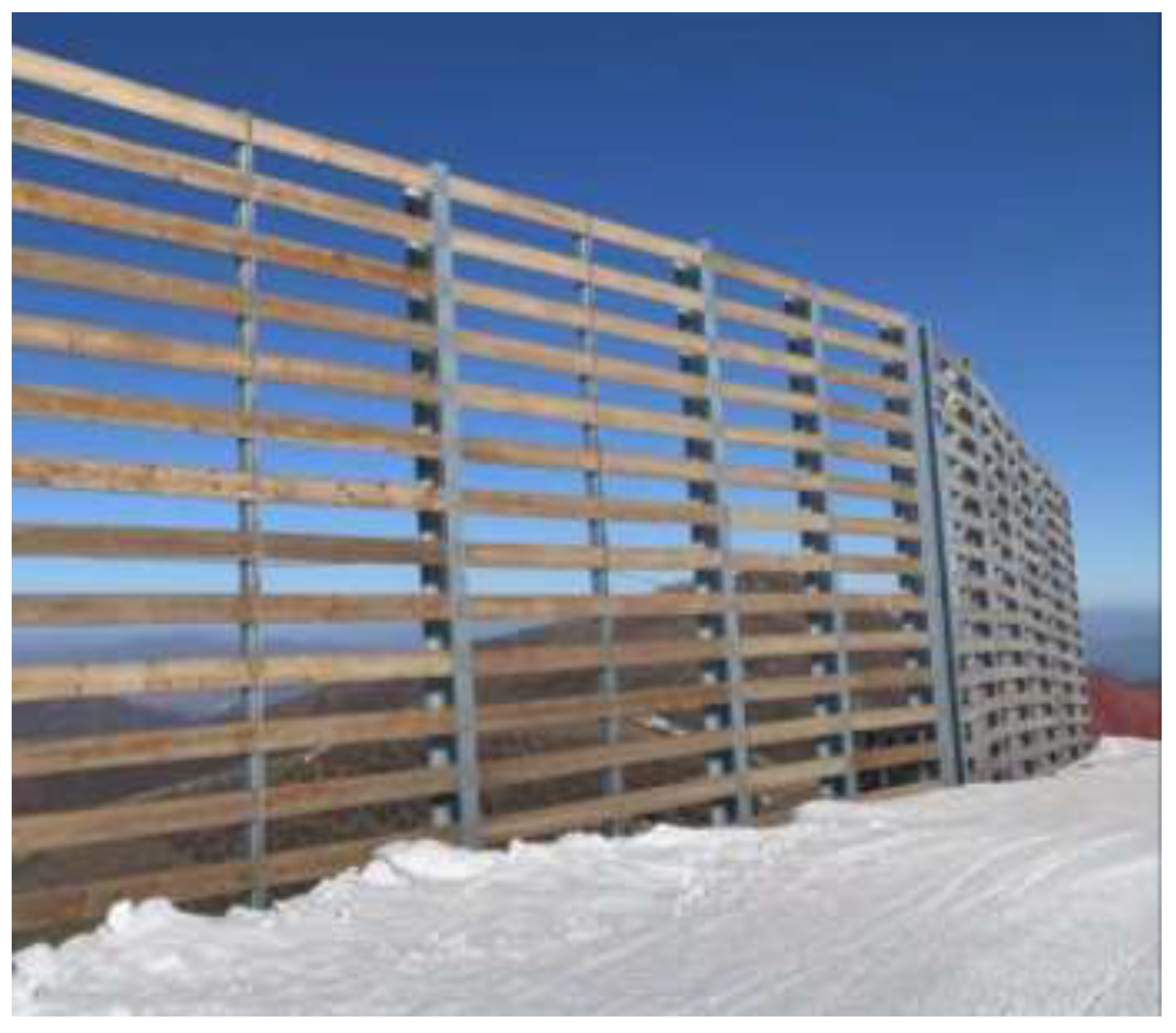
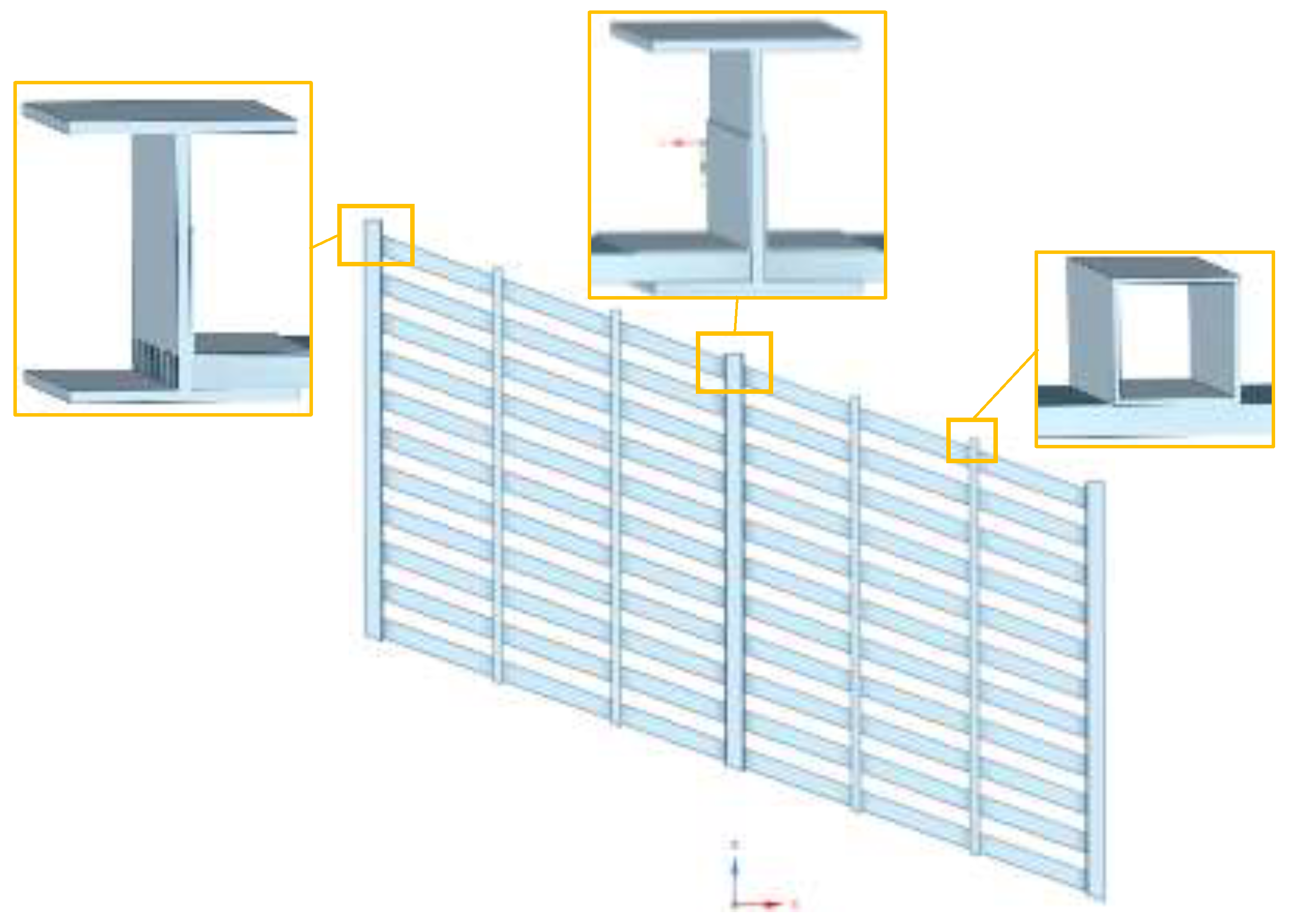
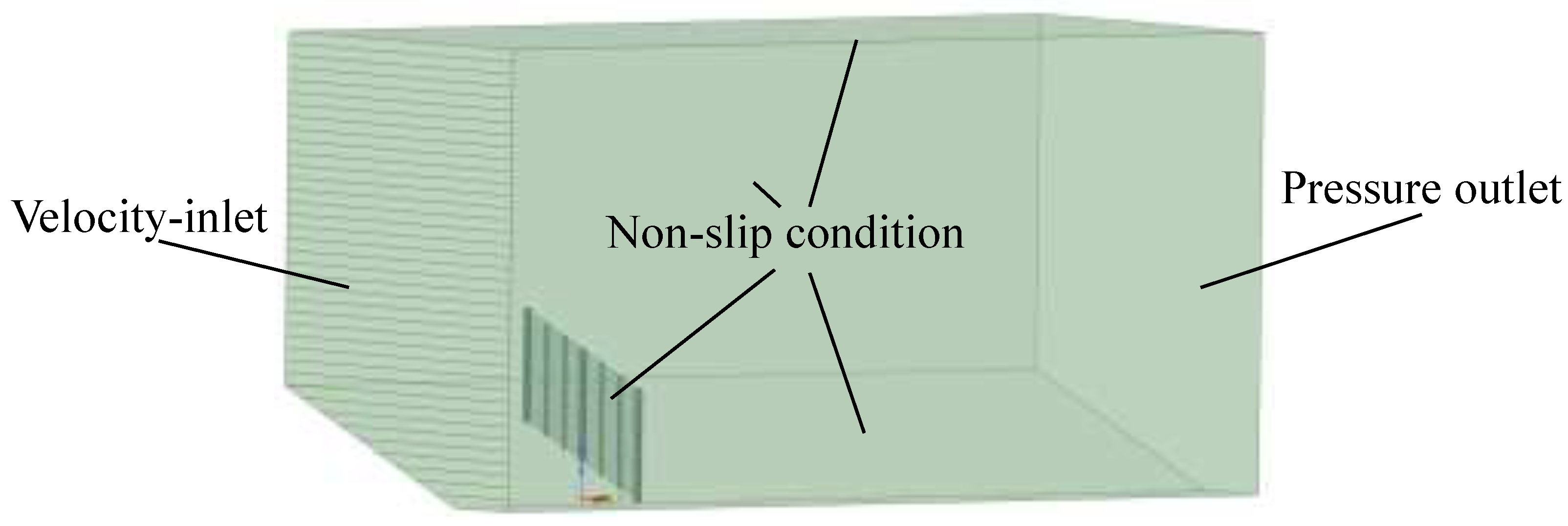

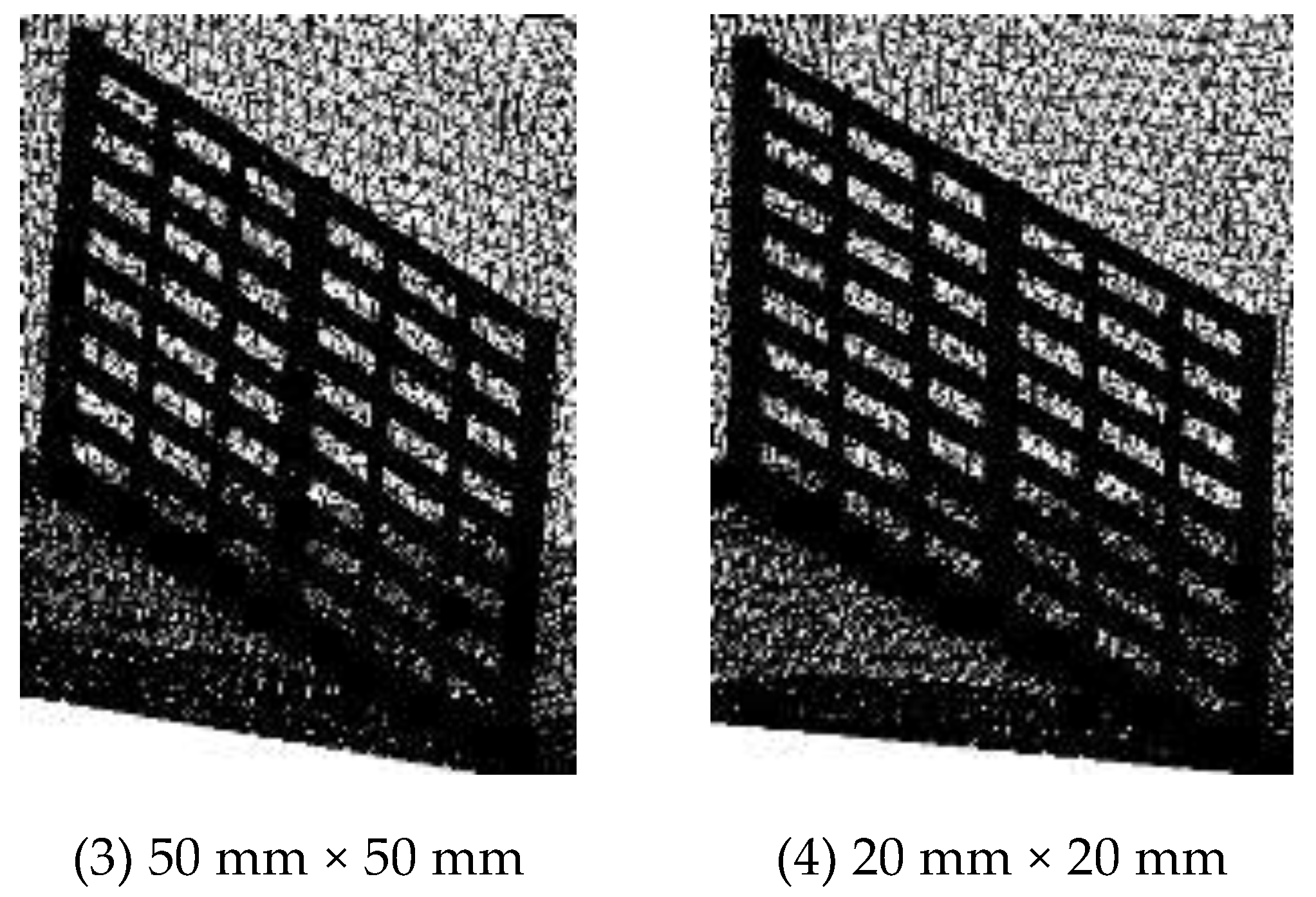
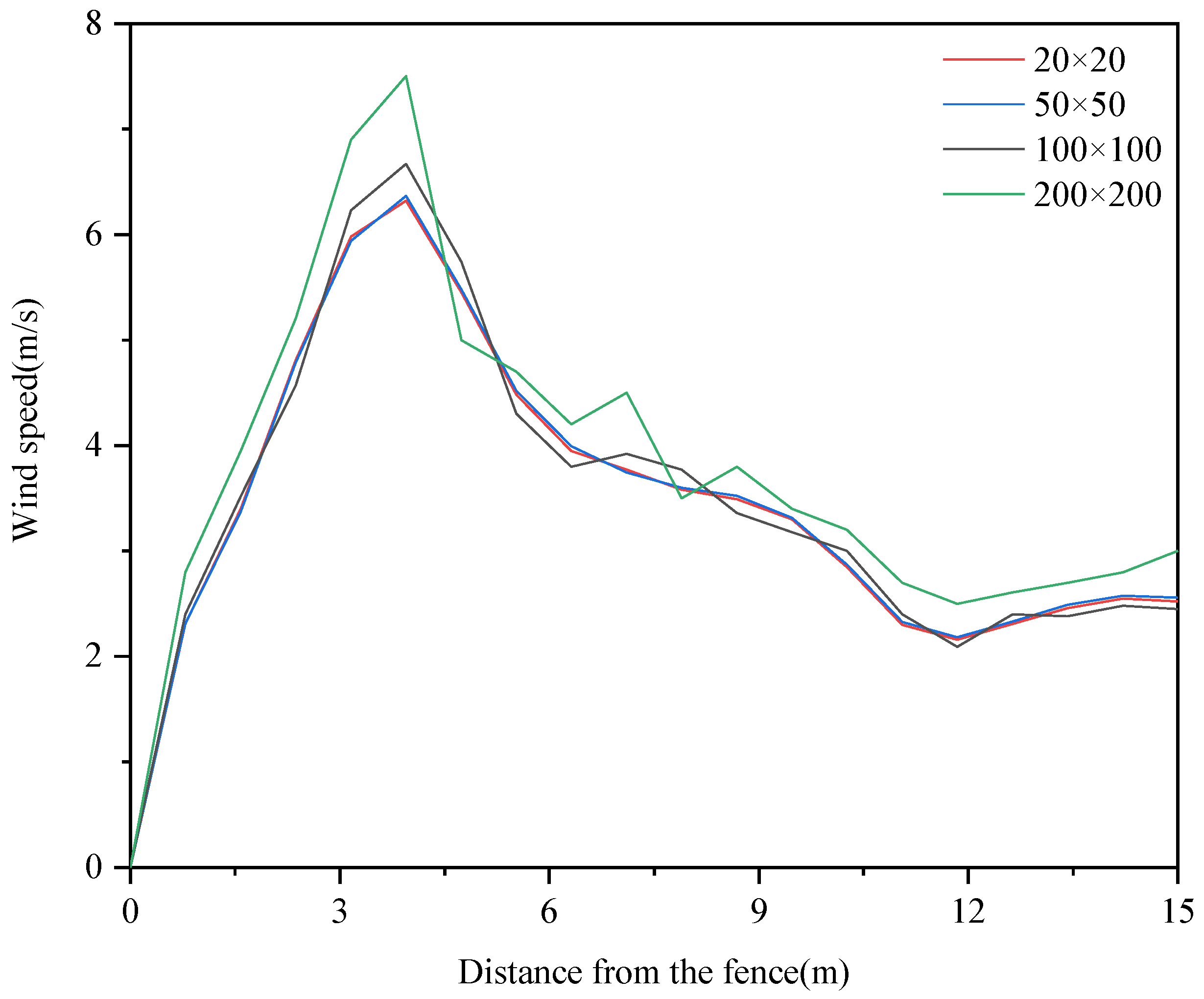
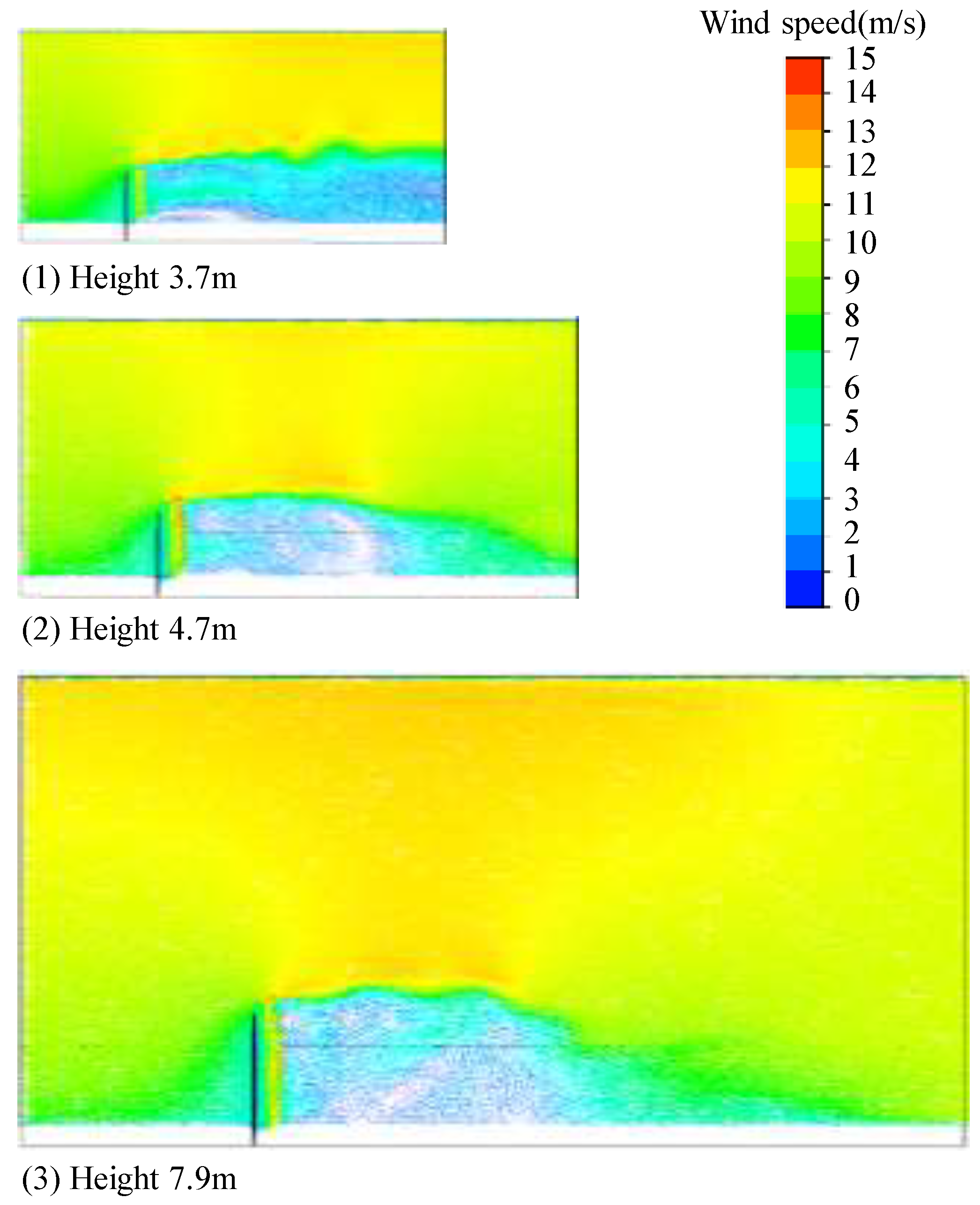
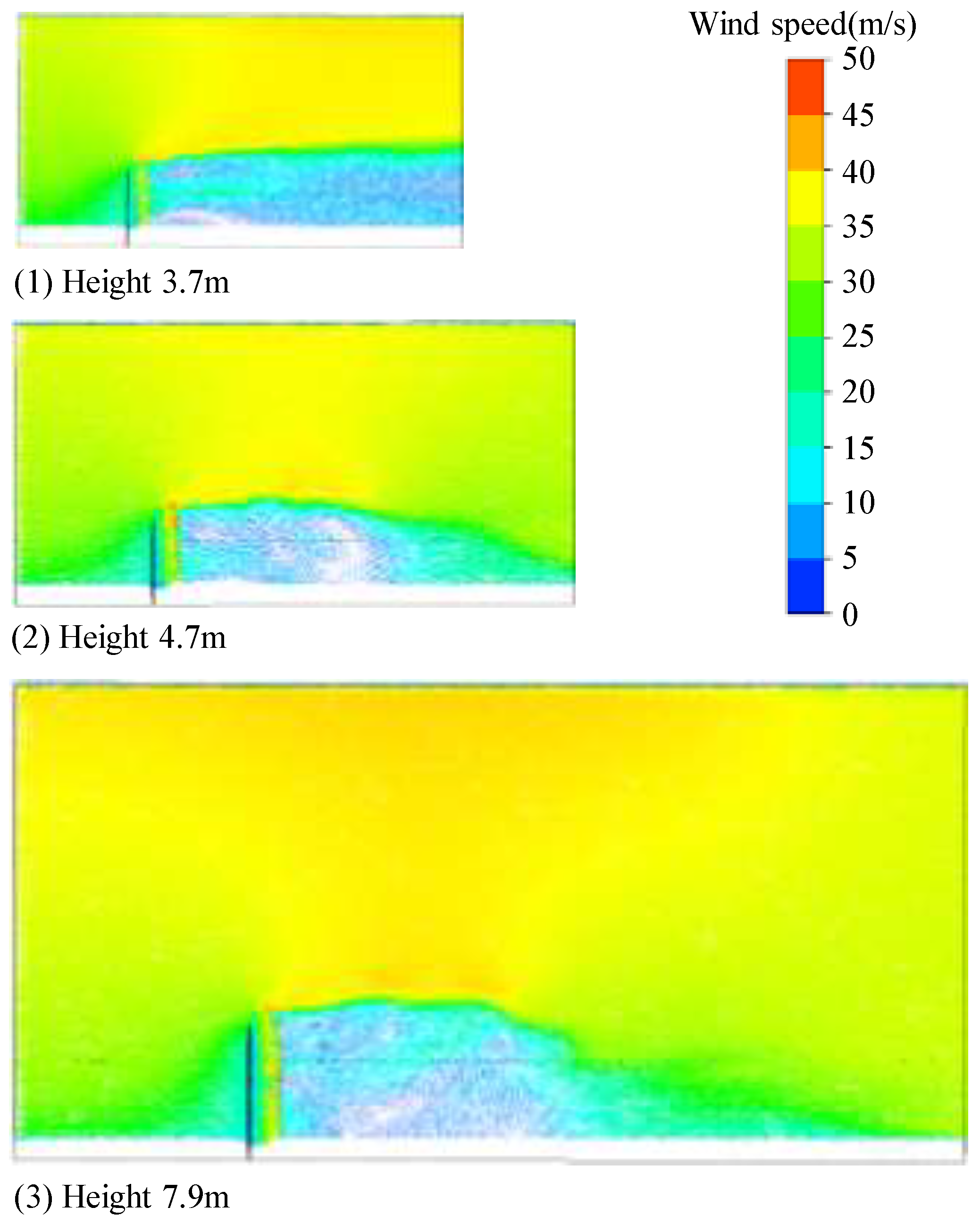


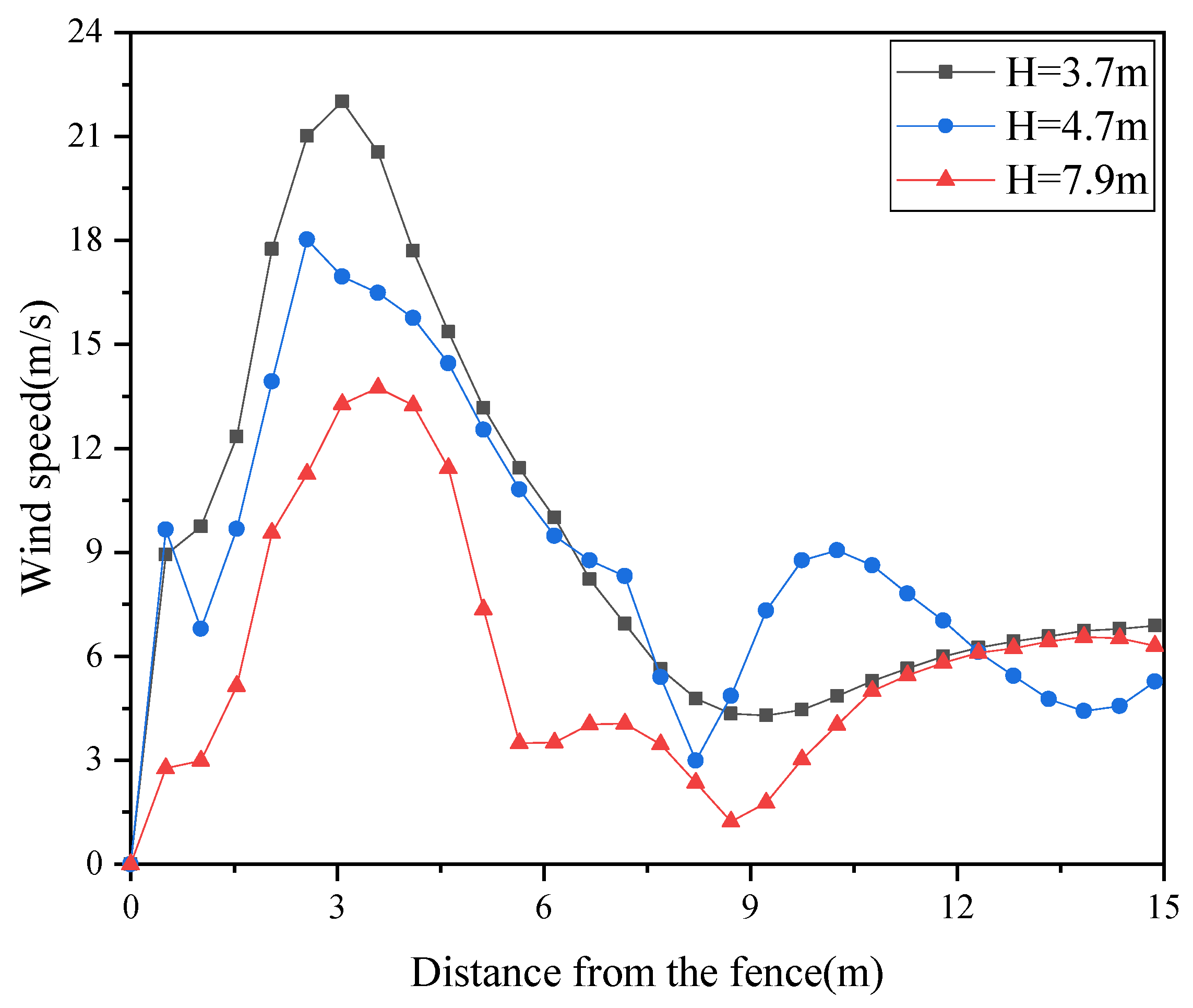
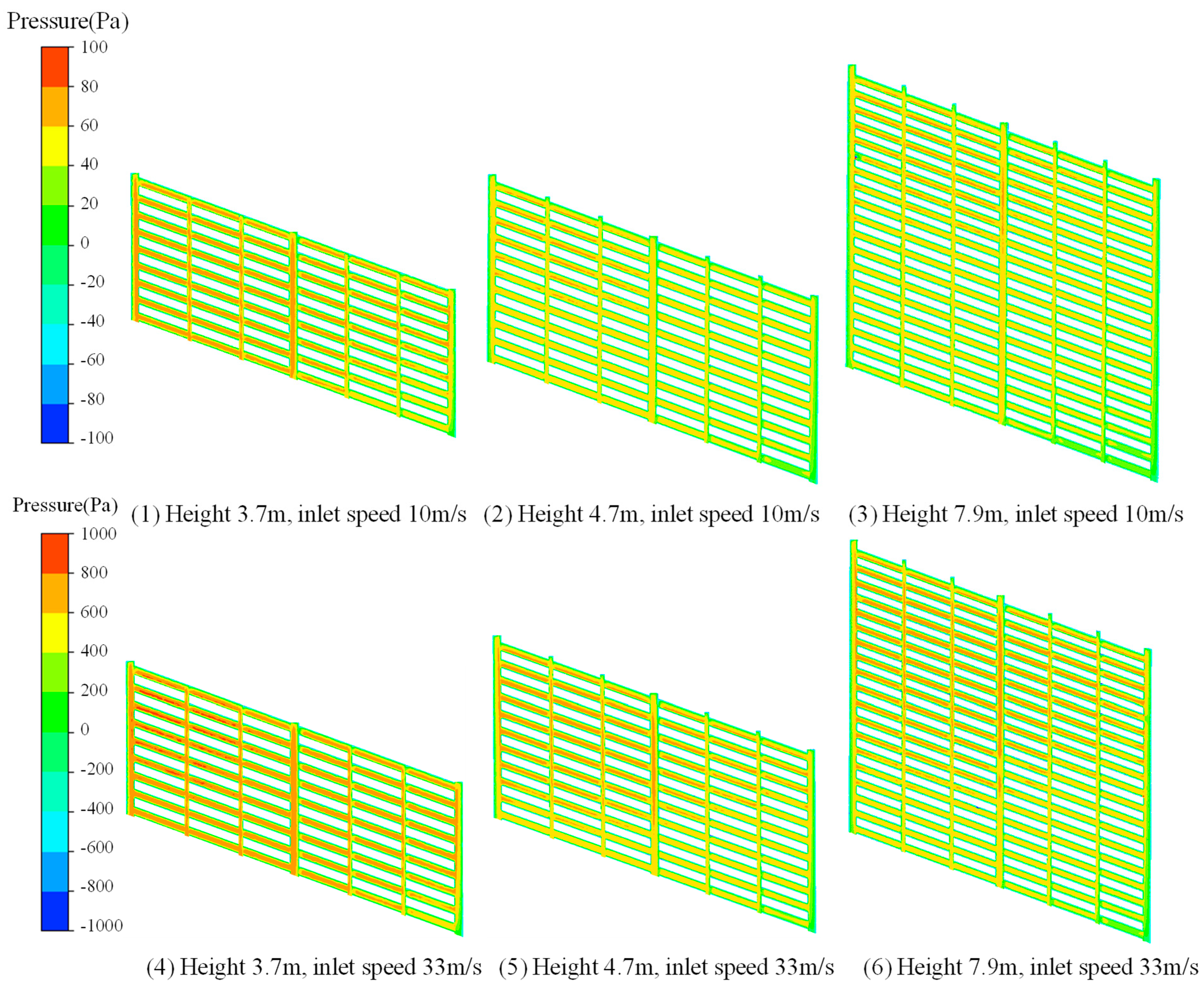

| Position | Height/m | Altitude/m |
|---|---|---|
| C2 Piste storm fence | 4.7 | 2060–2180 |
| E1 Piste storm fence | 3.7 | 1943–2103 |
| G1 Piste storm fence | 4.7 | 1762–1920 |
| 7.9 |
| Site | Altitude/m | Winter 2014–2015 | Winter 2016–2017 | ||
|---|---|---|---|---|---|
| Average Wind Speed/(m·s−1) | Maximum Wind Speed/(m·s−1) | Average Wind Speed/(m·s−1) | Maximum Wind Speed/(m·s−1) | ||
| A1489 | 928 | - | 15 | 3 | 15 |
| A1490 | 1316 | - | 10 | 1.8 | 10 |
| A1491 | 1805 | - | 24 | 7.9 | 22 |
| A1492 | 2108 | - | 33 | 10 | 27 |
Disclaimer/Publisher’s Note: The statements, opinions and data contained in all publications are solely those of the individual author(s) and contributor(s) and not of MDPI and/or the editor(s). MDPI and/or the editor(s) disclaim responsibility for any injury to people or property resulting from any ideas, methods, instructions or products referred to in the content. |
© 2023 by the authors. Licensee MDPI, Basel, Switzerland. This article is an open access article distributed under the terms and conditions of the Creative Commons Attribution (CC BY) license (https://creativecommons.org/licenses/by/4.0/).
Share and Cite
Fu, Z.; Li, Q. Study on Wind-Proof Effect and Stability of Windbreak Fence in Alpine Skiing Center. Sustainability 2023, 15, 3369. https://doi.org/10.3390/su15043369
Fu Z, Li Q. Study on Wind-Proof Effect and Stability of Windbreak Fence in Alpine Skiing Center. Sustainability. 2023; 15(4):3369. https://doi.org/10.3390/su15043369
Chicago/Turabian StyleFu, Zhaokun, and Qingwen Li. 2023. "Study on Wind-Proof Effect and Stability of Windbreak Fence in Alpine Skiing Center" Sustainability 15, no. 4: 3369. https://doi.org/10.3390/su15043369





